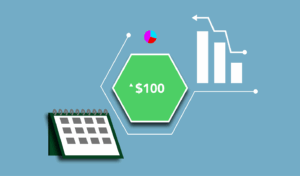In the fast-paced world of digital marketing, the temptation to react swiftly to daily ad performance can be overwhelming. While it’s natural to want immediate results, overreacting to short-term fluctuations in ad metrics can lead to misguided decisions and wasted resources. Understanding the intricacies of marketing analytics and developing a robust advertising strategy are crucial for achieving sustainable success. In this guide, we’ll delve into the hidden costs of impulsive changes in campaign evaluation and how a measured approach can empower you to optimize your advertising efforts effectively. Join us as we explore strategies that will fortify your digital marketing initiatives and foster long-term growth. For more insights on optimizing your Meta ads, check out these 4 tips to maximize ROI from clicks to customers.
Understanding Ad Performance
To effectively manage digital marketing campaigns, it’s crucial to grasp the nuances of ad performance. Let’s explore the key components that contribute to a comprehensive understanding of your advertising efforts.
Importance of Ad Metrics
Ad metrics are the lifeblood of digital marketing campaigns. They provide valuable insights into how your ads are performing and guide decision-making processes.
Key performance indicators (KPIs) such as click-through rate (CTR), conversion rate, and return on ad spend (ROAS) offer a snapshot of your campaign’s effectiveness. These metrics help marketers identify which ads resonate with their target audience and which need improvement.
However, it’s essential to remember that no single metric tells the whole story. A holistic approach, considering multiple data points, provides a more accurate picture of ad performance. This comprehensive view enables marketers to make informed decisions and optimize their campaigns effectively.
Forbes suggests that in the evolving digital landscape, understanding these metrics is more crucial than ever for creating successful advertising strategies.
Short-Term Results vs. Long-Term Goals
Balancing short-term results with long-term goals is a critical aspect of digital marketing. While immediate gains are appealing, they shouldn’t overshadow the bigger picture.
Short-term results, such as daily fluctuations in ad performance, can provide quick feedback on campaign adjustments. However, these snapshots may not accurately reflect the overall trajectory of your marketing efforts.
Long-term goals, on the other hand, focus on sustainable growth and brand building. These objectives often require patience and persistence, as results may take time to materialize.
A balanced approach considers both immediate performance and long-term strategy. This perspective allows marketers to make informed decisions that drive short-term results while aligning with overarching business objectives.
The Pitfalls of Overreacting
While staying responsive to ad performance is important, overreacting to every fluctuation can lead to detrimental outcomes. Let’s examine the potential pitfalls of hasty decision-making in digital marketing.
Impact on Advertising Strategy
Overreacting to daily ad performance can significantly disrupt your overall advertising strategy. Knee-jerk reactions often lead to inconsistent messaging and inefficient resource allocation.
When marketers make frequent, drastic changes based on short-term data, they risk losing sight of the bigger picture. This approach can result in a disjointed campaign that fails to build momentum or establish a consistent brand presence.
Moreover, constant tweaking can make it challenging to gather meaningful data. Without allowing sufficient time for campaigns to run their course, it becomes difficult to identify true trends and patterns in ad performance.
Jon Loomer emphasizes the importance of patience in ad optimization, suggesting that premature changes can hinder campaign effectiveness.
Misinterpreting Marketing Analytics
Misinterpreting marketing analytics is a common pitfall that can lead to misguided decisions. It’s crucial to understand the context and limitations of the data you’re analyzing.
One frequent mistake is attributing too much significance to short-term fluctuations. Daily or even weekly variations in ad performance may be due to external factors rather than the effectiveness of your campaign.
Another error is focusing solely on vanity metrics that look impressive but don’t necessarily translate to business outcomes. For instance, a high number of clicks or likes doesn’t always correlate with conversions or revenue.
To avoid these pitfalls, marketers should develop a deep understanding of their analytics tools and metrics. This knowledge enables more accurate interpretation of data and helps prevent overreactions based on misunderstood information.
Effective Campaign Evaluation
To maximize the impact of your digital marketing efforts, it’s essential to develop a systematic approach to campaign evaluation. Let’s explore strategies for assessing ad performance effectively.
Developing a Balanced Approach
A balanced approach to campaign evaluation combines short-term responsiveness with long-term strategic thinking. This method allows marketers to make informed decisions without overreacting to daily fluctuations.
Start by establishing clear, measurable goals for your campaigns. These objectives should align with your overall business strategy and provide a framework for evaluating performance.
Next, determine appropriate timeframes for assessment. While daily monitoring is important, make major decisions based on longer-term trends, typically over weeks or months.
Implement a structured review process that includes regular check-ins and more comprehensive evaluations at predetermined intervals. This approach helps maintain consistency while allowing for necessary adjustments.
Databox provides insights on how to strategically increase ad budgets based on performance, emphasizing the importance of a measured approach.
Leveraging Digital Marketing Insights
Effective campaign evaluation goes beyond simply tracking metrics. It involves leveraging digital marketing insights to drive continuous improvement and innovation.
Use A/B testing to compare different ad elements and identify what resonates best with your audience. This data-driven approach can inform future campaign strategies and creative decisions.
Analyze customer behavior and engagement patterns to gain deeper insights into your target market. This information can help refine your targeting and messaging for better results.
Stay informed about industry trends and platform updates that may impact ad performance. Regularly review best practices and case studies to identify new opportunities for optimization.
Seer Interactive discusses the benefits of consolidating ad accounts, which can provide more comprehensive insights and streamline campaign management.






